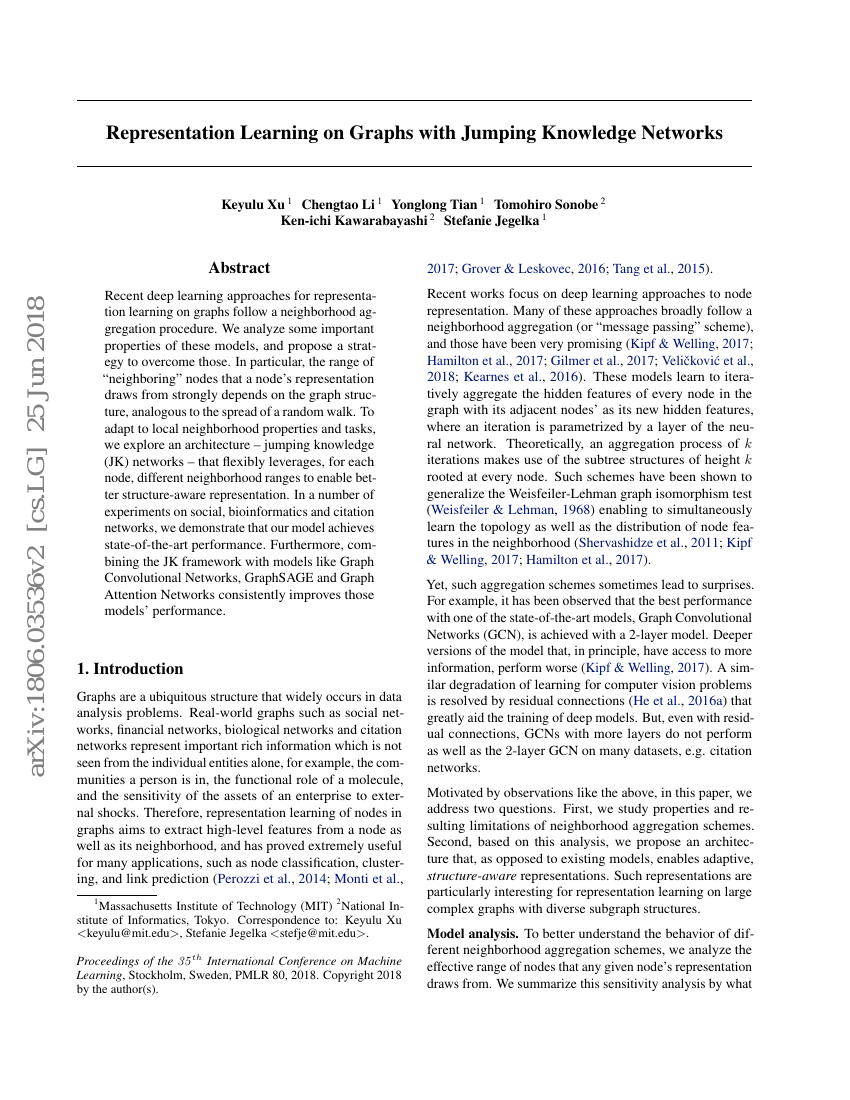Command Palette
Search for a command to run...
Keyulu Xu; Chengtao Li; Yonglong Tian; Tomohiro Sonobe; Ken-ichi Kawarabayashi; Stefanie Jegelka

Abstract
Recent deep learning approaches for representation learning on graphs follow a neighborhood aggregation procedure. We analyze some important properties of these models, and propose a strategy to overcome those. In particular, the range of "neighboring" nodes that a node's representation draws from strongly depends on the graph structure, analogous to the spread of a random walk. To adapt to local neighborhood properties and tasks, we explore an architecture -- jumping knowledge (JK) networks -- that flexibly leverages, for each node, different neighborhood ranges to enable better structure-aware representation. In a number of experiments on social, bioinformatics and citation networks, we demonstrate that our model achieves state-of-the-art performance. Furthermore, combining the JK framework with models like Graph Convolutional Networks, GraphSAGE and Graph Attention Networks consistently improves those models' performance.
Code Repositories
Benchmarks
| Benchmark | Methodology | Metrics |
|---|---|---|
| node-classification-on-ppi | JK-LSTM | F1: 97.6 |
Build AI with AI
From idea to launch — accelerate your AI development with free AI co-coding, out-of-the-box environment and best price of GPUs.